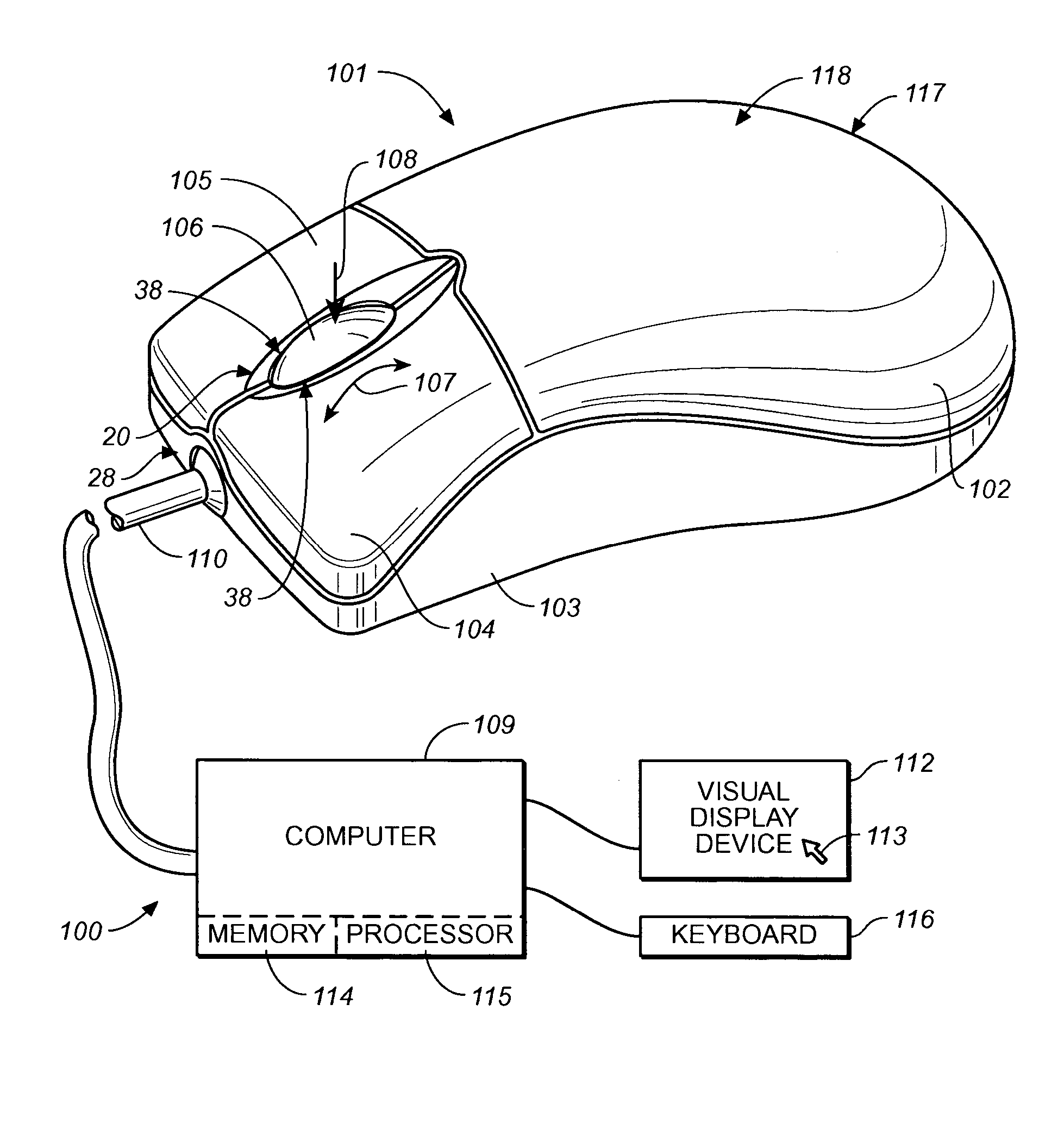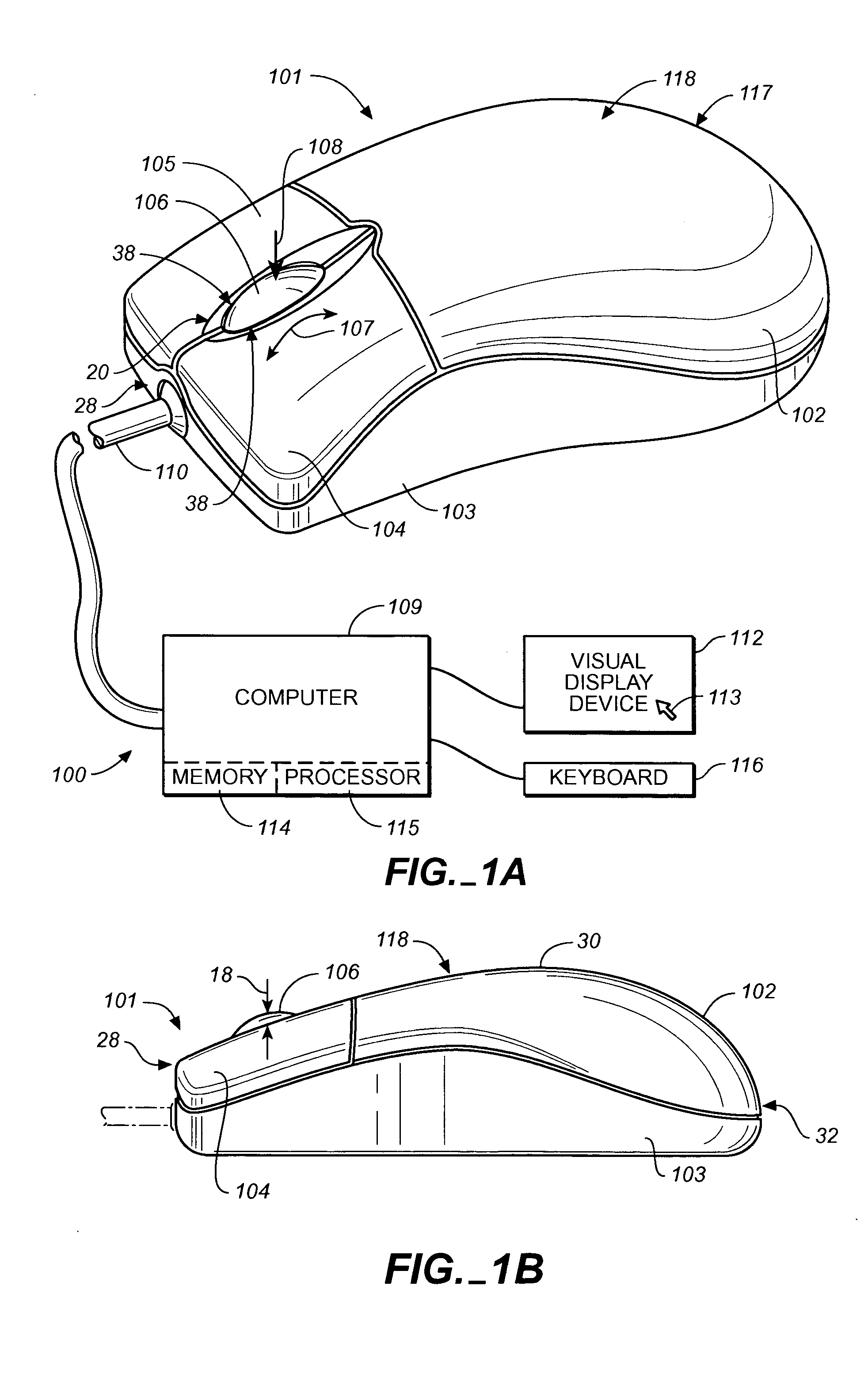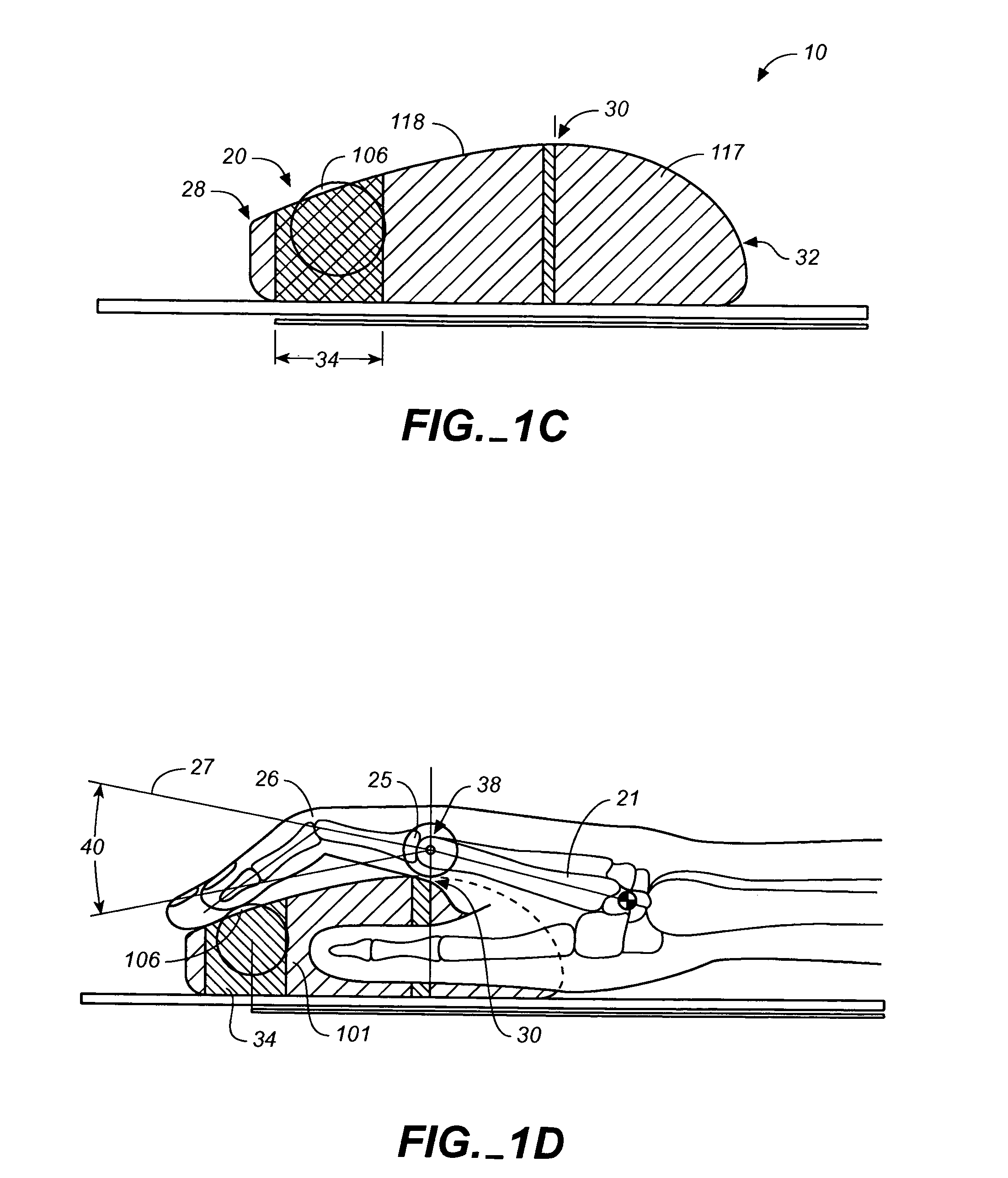System and method of adjusting display characteristics of a displayable data file using a ergonomic computer input device
a computer input device and display characteristic technology, applied in computing, instruments, electric digital data processing, etc., can solve the problems of inconvenient use, awkward use, uncomfortable use, etc., and achieve the effect of reducing the inadvertent actuation of the pointing devi
- Summary
- Abstract
- Description
- Claims
- Application Information
AI Technical Summary
Benefits of technology
Problems solved by technology
Method used
Image
Examples
Embodiment Construction
[0052] A system and method of adjusting display characteristics of a document or data file in a computer system is described. In the following description, numerous specific details are set forth to provide a thorough understanding of the present invention, such as mechanical construction and components of a computer input device, certain steps performed by the computer system for adjusting display characteristics of a document, etc. One skilled in the relevant art, however, will find it obvious that the present invention may be practiced without some or all of these specific details. In other instances, well-known structures and methods are not shown or discussed in detail so that the description of the present invention is not unnecessarily obscured.
[0053] Referring to FIG. 1, a computer system 100 of the present invention includes a computer input device, illustrated as a mouse 101. The mouse 101 generally includes an upper housing 102 and a lower housing 103. Primary and second...
PUM
 Login to View More
Login to View More Abstract
Description
Claims
Application Information
 Login to View More
Login to View More - R&D
- Intellectual Property
- Life Sciences
- Materials
- Tech Scout
- Unparalleled Data Quality
- Higher Quality Content
- 60% Fewer Hallucinations
Browse by: Latest US Patents, China's latest patents, Technical Efficacy Thesaurus, Application Domain, Technology Topic, Popular Technical Reports.
© 2025 PatSnap. All rights reserved.Legal|Privacy policy|Modern Slavery Act Transparency Statement|Sitemap|About US| Contact US: help@patsnap.com



